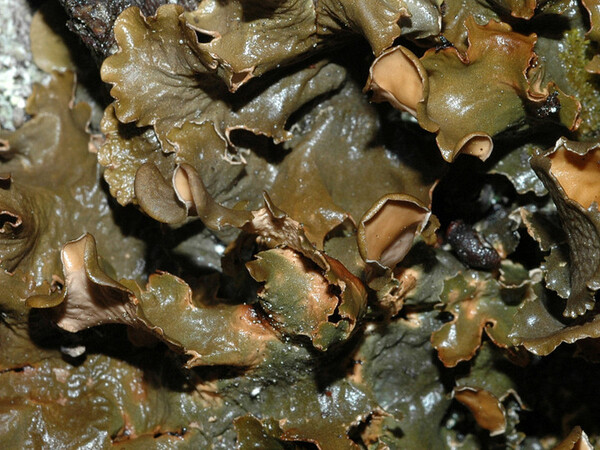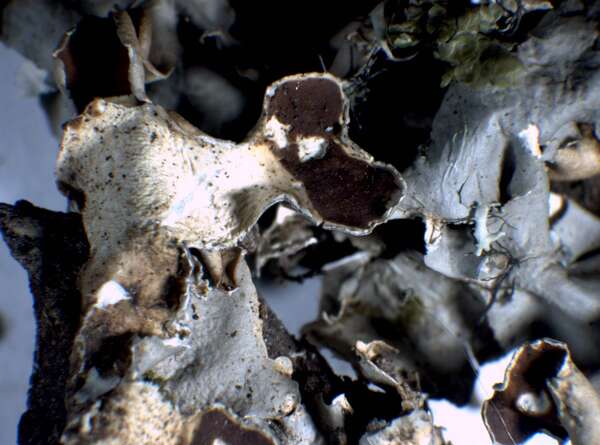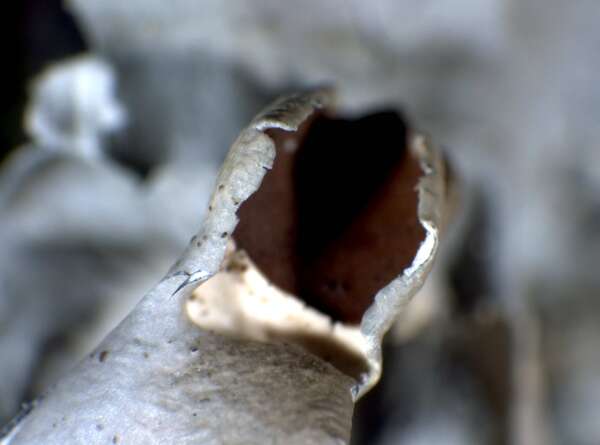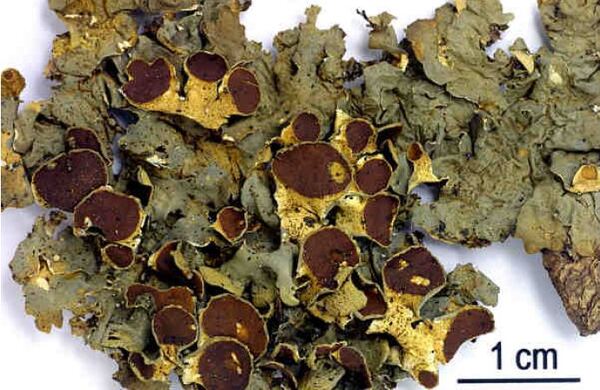Nephroma bellum (Spreng.) Tuck.
Boston J. Nat. Hist., 3: 293, 1841. Basionym: Peltigera bella Spreng. - Caroli Linnaei Syst. Veget., ed. 16, 4, 1: 306, 1827.
Synonyms: Nephroma laevigatum auct. p.p. non Ach.; Nephroma papyraceum auct. p.p.; Nephromium subtomentellum (Nyl.) Cromb.
Distribution: N - Frl (Nascimbene & al. 1998, Tretiach & Molaro 2007), Ven (Nascimbene & al. 2005b, 2006c, 2007, Nascimbene 2011), TAA (Nascimbene & Caniglia 2000, Nascimbene & al. 2006e, 2022, Nimis & al. 2015, Hafellner 2021), Lomb (Anzi, Lich. Rar. Lang. Exs. 24: S-L51525), Piem (Rabenhorst, Lich. Eur. Exs. 351: S- L51518, Brackel & Puntillo 2016), VA (Borlandelli & al. 1996, Piervittori & Isocrono 1997, 1999), Emil (Fariselli & al. 2020), Lig. C - Tosc (Tretiach & Nimis 1994, Benesperi & al. 2007, Benesperi 2011), Abr (Di Santo & Ravera 2012, Corona & al. 2016), Sar (Zedda 1995, 2002, 2002b, Loi & al. 2000). S - Camp (Aprile & al. 2003b, Garofalo & al. 2010), Pugl, Bas (Potenza 2006, Potenza & Fascetti 2012), Cal (Puntillo 1995, 1996, Brackel & Puntillo 2016), Si (Nimis & al. 1994, Liistro & Cataldo 2011, Ottonello & al. 2011).
Description: Thallus foliose, heteromerous, dorsiventral, loosely attached, fragmentary or forming 3-8(-10) cm wide rosettes. Lobes (2-)4-8(-10) mm wide, elongate, partly overlapping, with subrotund, entire or lobulate margins. Upper surface grey-brown to dark brown when dry, much darker when wet, smooth, sometimes slightly pubescent, esorediate; lower surface pale brown to yellow-brown, darker and rugulose in central parts, smooth in marginal parts, mostly glabrous, rarely weakly pubescent in central parts. Upper and lower cortex paraplectenchymatous; medulla white. Apothecia common, immersed on lower surface at tips of lobes, orbicular, to 1 cm across, cup-shaped, with a brown disc and a scabrid thalloid dorsal surface. Epithecium brownish; hymenium and hypothecium colourless. Asci 8-spored, fissitunicate, the thickened apex with a K/I+ blue ring, Peltigera-type. Ascospores 3-septate, pale brown, subfusiform, thick-walled, (15-)17-21(-23) x 4-6 µm. Pycnidia rare, mostly marginal, black, immersed, punctiform. Conidia bacilliform, slightly swollen at one or both ends, 4-5.5 x 1.5-2 µm. Photobiont cyanobacterial (Nostoc, the cells not in long chains). Spot tests: upper cortex K-, C-, KC-, P-; medulla K+ pale yellow or K-, C-, KC-, P-. Chemistry: upper cortex with an unknown brown pigment; medulla with dolichorrhizin, zeorin, hopane-15α,22-diol and traces of hopane-7β,22-diol in variable concentrations.Note: a holarctic Lobarion-species of bark, epiphytic bryophytes and mossy rocks in humid forests. It is included in the Italian red list of epiphytic lichens as “Near-threatened” (Nascimbene & al. 2013c).
Growth form: Foliose, broad lobed
Substrata: bark
Photobiont: cyanobacteria, filamentous (e.g. Nostoc, Scytonema)
Reproductive strategy: mainly sexual
Most common in areas with a humid-warm climate (e.g. most of Tyrrenian Italy)
Commonnes-rarity: (info)
Alpine belt: absent
Subalpine belt: absent
Oromediterranean belt: absent
Montane belt: very rare
Submediterranean belt: extremely rare
Padanian area: absent
Humid submediterranean belt: extremely rare
Humid mediterranean belt: extremely rare
Dry mediterranean belt: absent
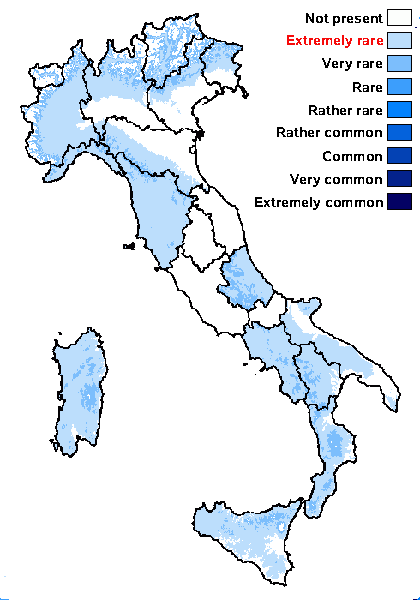
Predictive model
Herbarium samples
Growth form: Foliose, broad lobed
Substrata: bark
Photobiont: cyanobacteria, filamentous (e.g. Nostoc, Scytonema)
Reproductive strategy: mainly sexual
Most common in areas with a humid-warm climate (e.g. most of Tyrrenian Italy)
Commonnes-rarity: (info)
Alpine belt: absent
Subalpine belt: absent
Oromediterranean belt: absent
Montane belt: very rare
Submediterranean belt: extremely rare
Padanian area: absent
Humid submediterranean belt: extremely rare
Humid mediterranean belt: extremely rare
Dry mediterranean belt: absent

Predictive model
| Herbarium samples |
 INDEX FUNGORUM
INDEX FUNGORUM
 GBIF
GBIF
 DOLICHENS
DOLICHENS
